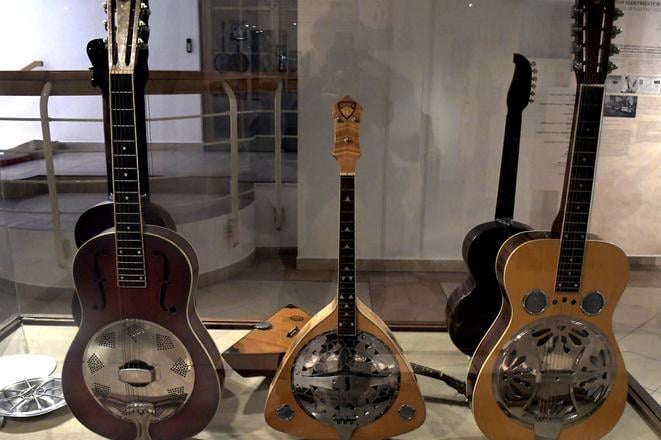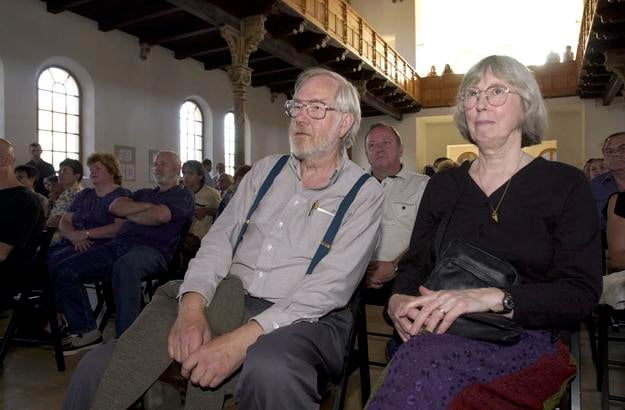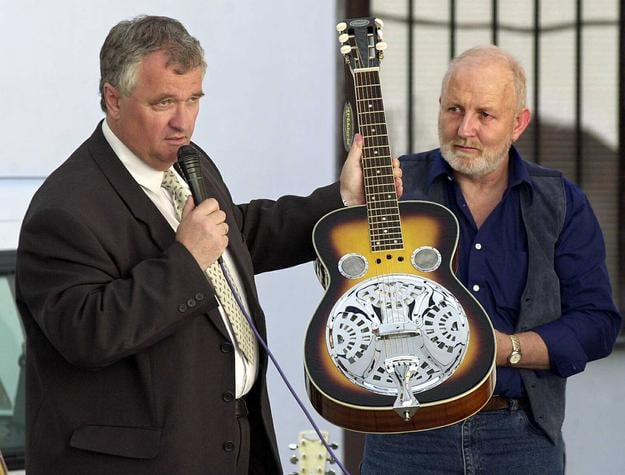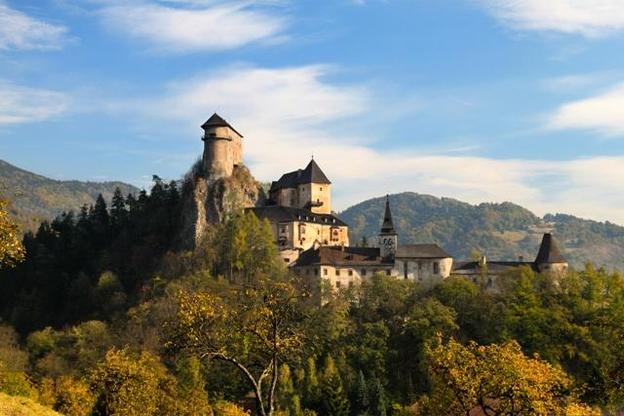You can read this exclusive content thanks to the FALATH & PARTNERS law firm, which assists American people with Slovak roots in obtaining Slovak citizenship and reconnecting them with the land of their ancestors.
In Slovak, the word 'dobro' means good. In music, the word has become a generic name for a certain type of instrument properly called resonator guitars. As the name might suggest, the latter was invented by none other than a Slovak immigrant to the United States, John Dopyera.
At the time when musicians were looking for ways to amplify the sound of acoustic guitars, his design was the first to be electrified and served as an early step towards full fledged electric guitars.
Dobro guitars became prized for their distinctive sound, finding a special place in the bluegrass and blues genres. Renowned musicians such as Bob Dylan, John Lennon, Eric Clapton, Keith Richards played the instrument, and it was also featured on the cover of Dire Straits' Brothers in Arms album.
Surrounded by instruments
Born as Ján Dopjera on July 6, 1893 in the village of Stráže in the Záhorie region, western Slovakia, to Katarína and Jozef Dopjera. He was the fourth of eventually 10 children. Shortly after his birth the family moved to the not too distant village of Dolná Krupá, where his father worked as a miller. Today, there is a locality named Dopjera's mill, as well as a street named after him.
More importantly, his father was a talented musician; in addition to playing violin, he taught himself to play guitar, ukulele, and banjo, among other instruments. He even made violins himself, a skill he passed on to Ján.
In 1908, the family packed up and joined the thousands of Slovaks who emigrated to the US. The family found a new home all the way on the West coast in Los Angeles, California, and opened a carpentry workshop, where Ján worked as well. They repaired instruments and later also made instruments themselves.
Eventually, Ján americanised his name to John Dopyera. In the early 1920s, with his brothers Rudy and Emil, they established their own workshop to repair and produce musical instruments. At the same time, he also tried to come up with various innovations and improvements. He was already experimenting with a violin with a metal resonator, a conical device to amplify its sound, for which he eventually got a patent in the US.
Prolific inventor
Around the same time, musicians were looking for a way to amplify the sound of an acoustic guitar, which was quickly drowned out by other instruments in an orchestra. One such musician was vaudeville instrumentalist George Beauchamp, who first met with John Dopyera in 1925. A year later, after many experiments, the latter came up with a solution.
He created a guitar with a brass body and internal amplification in the form of three inward facing resonators mounted under the bridge, which was later patented. The resulting sound was much louder and metallic compared to an acoustic guitar. Together with his brothers and several investors, they founded the company National String Instrument Corporation to produce the guitar that became to be known as the National Tricone.
However, in 1928 disputes in the company caused John and his brothers to leave. Still, the former remained a major shareholder in National String Instrument Corporation. Together, they went on to found their own company, the Dobro Manufacturing Company, with the word 'dobro' both being a contraction of Dopyera Brothers and meaning good in Slovak.
"Dobro means good in any language," was their slogan.
Although National kept the patent for the improved guitar, it didn't stop John to come up with another design. The company soon came up with a competing guitar with a wooden body an a single outward facing resonator mounted beneath a distinctive circular perforated metal cover plate. He got a patent for it.
In 1932, Dopyera and guitarist Art Simpson invented several new electrified guitars with magnetic pickups. In the same year, the brothers managed to secure interests in National, alleviate the disputes and in 1935 merged the companies together to form the National Dobro Corporation that produced dobros, mandolines, guitars and other instruments.
Dopyera also got a patent for the world's first electric violin and other patents related to the design of the guitar and banjo.
John and Rudy eventually left the company to the other brothers. In the early 1940s, he moved to Grants Pass in Oregon and founded a small business repairing and selling instruments. He never returned to Slovakia; he died in 1988 at the age of 94.
Unknown origins
The dobro eventually became very popular in American country music. To this day it is a generic name for all resonator guitars.
The guitar found its place in blues and rock music, famous musicians such as Bob Dylan, John Lennon and George Harrison of the Beatles, Johnny Winter, Eric Clapton, and Keith Richards from the Rolling Stones all played dobros.
Interestingly, the fact that the inventor of the dobro had Slovak roots remained unknown for many decades.
"The public learned of John Dopyera's Slovak roots for the first time in June 1989 from an article the monthly Kultúra a Život Trnavy (Culture and Life of Trnava), a year after the inventor's death," said blues musician Peter "Bonzo" Radványi who plays the dobro himself. In 1992, Radványi co-founded the Dobrofest festival in recognition of John Dopyera.
In 2005, the International Bluegrass Music Association honoured the Dopyera brothers with the Distinguished Achievement Award, one of the association's highest honours. It recognizes those who have supported bluegrass music and their achievements that have led to greater recognition of the genre.
Spectacular Slovakia travel guides
A helping hand in the heart of Europe thanks to our Slovakia travel guide with more than 1,000 photos and hundred of tourist spots.
Our detailed travel guide to the Tatras introduces you to the whole region around the Tatra mountains, including attractions on the Polish side.
Lost in Bratislava? Impossible with our City Guide!
See some selected travel articles, podcasts, and traveller info as well as other guides dedicated to Nitra, Trenčín Region, Trnava Region and Žilina Region.





